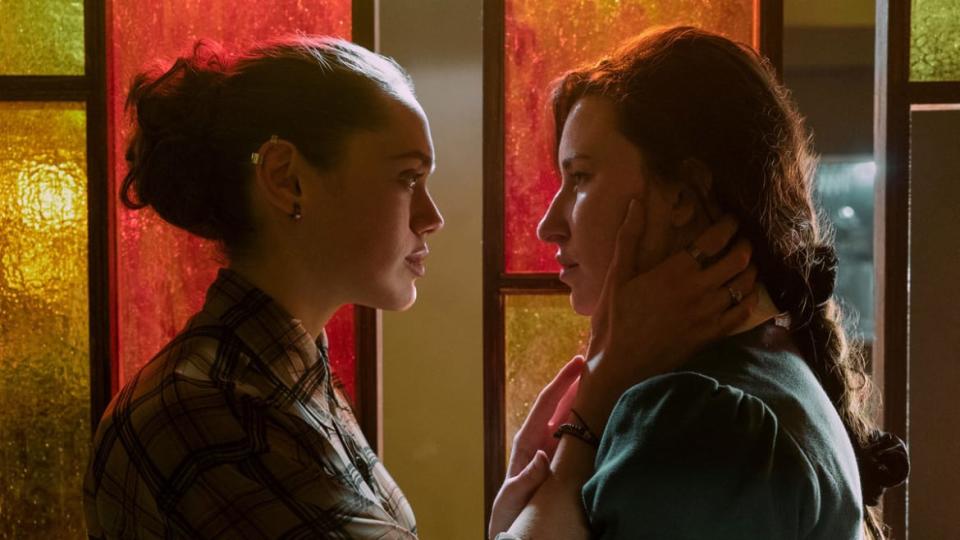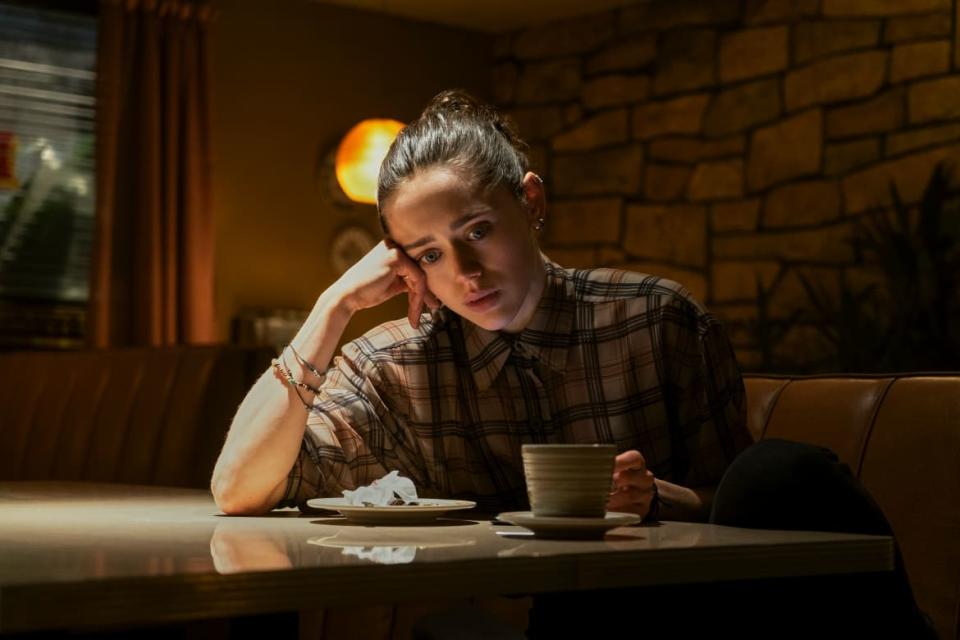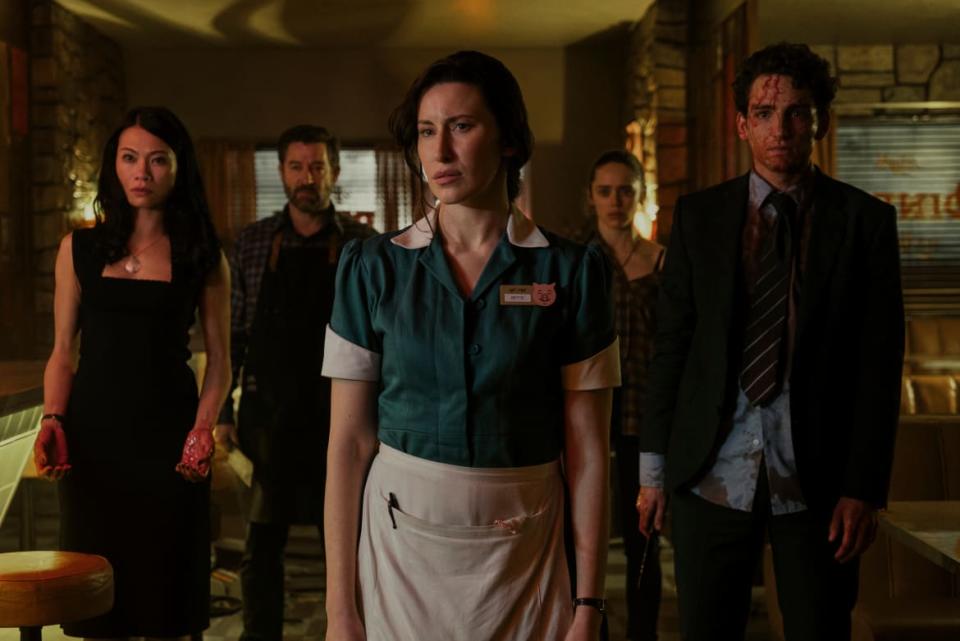‘The Sandman’ Kept a Disturbing Lesbian Plot—and Is Better for It

The landscape for lesbian-adjacent television is a bit strange right now. For every prestige series like Yellowjackets, there is a canceled cheesy romp like First Kill. A more satisfying balance between serious dramas and easy-to-watch guilty pleasures hasn’t particularly been achieved yet, even if lesbian representation has increased on both cable and streaming in recent years.
GLAAD’s Where We Are on TV report for the 2021-2022 season reports that lesbian characters make up 40 percent of LGBTQ+ characters on shows currently broadcasting. However, whether these characters are written to be more than just walking stereotypes depends on who you ask. Seriously, think of the lesbian characters you see on TV currently, then think about if they are given any storylines besides those involving their sexuality. Can you think of any that don’t?
That brings us to Netflix’s recently released series, The Sandman. Adapting the Neil Gaiman, Sam Kieth, and Mike Dringenberg comics of the same name, it largely tells the story of Dream (Tom Sturridge), a powerful being attempting to restore his full powers after a lengthy absence. When it arrived on Netflix on Aug. 5, it was met with mostly positive reviews based on its faithfulness to its source material.
The show actually does a fairly good job at including LGBTQ+ characters that are more than their identities—Mason Alexander Park’s iteration of Desire has the chance to be a nonbinary awakening for some viewers. This is partly because the entire concept of The Sandman is one that cannot be circumvented into strict binaries or societal norms. While it might not be a win for everyone who watches it, you can’t deny that it succeeds in showcasing LGBTQ+ identities that aren’t there for shallow representation points.

And there might not be a character that defies what makes for good LGBTQ+ inclusion better than Daisy Head’s Judy. She makes her appearance in the episode “24/7,” which is directly adapted from the “24 Hours” story from the first Sandman volume, titled “Preludes & Nocturnes.” While she is explicitly a lesbian in both the comic story and the episode, she has a storyline in the former that I assumed would be completely written out of the adaptation due to its controversial nature. Lo and behold, it was preserved almost to a T in the series, a move that was the best one to make in our current media climate.
In order to get an idea of why this decision was the best one, let’s recap Judy’s journey throughout “24/7.” She arrives at a diner in a distressed state, not unlike the other attendants of the restaurant. It turns out the patrons of the diner were all put under a curse by John Dee (David Thewlis), which progresses as the episode goes on.
As she describes to the waitress, she and her unseen girlfriend, Donna, had gotten into a pretty nasty fight the night before. Judy hasn’t been able to get back in touch with Donna since that fight, despite her numerous attempts to do so. When she receives a call from a mutual friend, she hopes that will find a lead in her search, only to be told that the friend hasn’t heard from Donna. The exchange is awkward. It is clear to the audience that something seems up with the friend, but Judy either can’t pick it up or ignores it altogether.
The true story behind Judy’s fight with her girlfriend is steadily revealed. She eventually confesses that she frequently gets jealous and paranoid over what Donna does. When asked whether these feelings have any basis in reality, Judy admits that they don’t, knowing deep down that her girlfriend would never actually be unfaithful despite her paranoia.
This shady and irrational behavior plants the seeds of the ultimate secret that Judy was hiding. After engaging in a hefty makeout session with diner waitress Bette (Emma Duncan), she reveals that she had hit Donna in the face during their fight the previous night, leading the latter to walk out on her. It’s not clear what the extent of the violence was, nor if Judy actually is remorseful for what she did. However, anyone paying attention to the hints dispersed throughout the episode regarding her true nature should realize that Judy is jealous, controlling, and now that she hit Donna, abusive.
Everything You Need to Know About ‘The Sandman,’ a Series Decades in the Making
Needless to say, she isn’t a stellar example of positive lesbian representation on television. Given how the first season of The Sandman premiered on Netflix directly after the streamer cancelled the teen-centered romance First Kill, which had a lesbian couple as its central protagonists, it is likely that some viewers might view this juxtaposition in an unfavorable light. After all, why is a burgeoning and relatively healthy romance between two young women not good enough for the streamer, but it’s perfectly okay for a lesbian character to be abusive? Without the proper context, it could seem like the platform is attempting to demonize lesbians by showing them in a worse light rather than a positive one.
While it is true that Netflix and other streaming platforms often fail with their LGBTQ+ representation, this example doesn’t exactly hold up. The truth is that representation on television by itself is not enough to properly replicate real life. Just because there are lesbian characters on a certain show doesn’t mean their characterization is in any way representative of actual relationships off screen. This can be applied to any LGBTQ+ identity, as well—how many queer people would actually be willing to engage in an a capella P!nk rendition as shown in They/Them?
Unfortunately, domestic physical and sexual violence is something that women with sexual attraction to other women are not inherently immune to. According to the National Intimate Partner and Sexual Violence Survey from 2010, around 43 percent of women that identify as lesbians had experienced “rape, physical violence, and/or stalking by an intimate partner during their lifetime.” Spanning into the general sapphic community, around 61 percent of bisexual women reported the same answer.
While this data could be considered outdated, more recent studies back up its claims. One conducted by LGBTQ+-centric support organization Network/LA Red in 2019 said that around 62 percent of lesbian participants reached out for help “when they felt unsafe in their relationship(s).” Another report, this time created by the Los Angeles LGBT Center, posits that traditional/heterosexual-centered methods of domestic violence intervention are ineffective when conducted in LGBTQ+ relationships. This is due to a number of reasons, with the potential for outing chief among them.

These statistics should not be used to frame lesbian relationships as dangerous. On the contrary, as it is important to acknowledge an uncomfortable truth that exists in all relationships, whether between a straight couple or a gay couple: There is the chance that someone in the relationship could abuse their power. By ignoring the fact that some lesbians experience abuse at the hands of their partners, we are pretending that the sheer possibility of such experiences is impossible simply because the relationship is between two women.
I would be remiss not to acknowledge the importance of escapism in art. Of course, many viewers are looking for the same types of cheesy romances and unrealistic stories that straight couples center around all the time. We do need more of those types of stories, whether through movies, television, or other forms of art. It is a shame that television shows aren’t providing substantial enough LGBTQ+ representation to properly tell these stories. On the other hand, it is unfair to write off a rare acknowledgment of how some LGBTQ+ people can end up abusing their partners because it isn’t part of one of these more positive stories.
This is precisely why The Sandman preserving the subplot of Judy’s secret abuse is so important. When we ask for better lesbian representation in media, we should be asking for more complex and realistic depictions of these relationships. This means not shying away from potentially difficult relationships or unlikeable characters, even if that unlikeability reaches its extremes.
Of course, this doesn’t mean expecting all lesbian characters moving forward to be assholes, but when a terrible character who is terrible to her lover is explicitly labeled as a lesbian, it shouldn’t automatically be considered bad representation. When we acknowledge the fact that toxic and sometimes abusive relationships can occur regardless of sexual orientation, we are presenting a more authentic and nuanced look at LGBTQ+ romance, something we need now more than ever.
Get the Daily Beast's biggest scoops and scandals delivered right to your inbox. Sign up now.
Stay informed and gain unlimited access to the Daily Beast's unmatched reporting. Subscribe now.

 Yahoo Movies
Yahoo Movies 